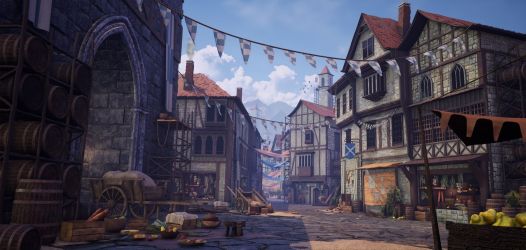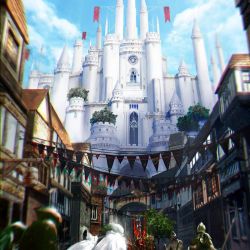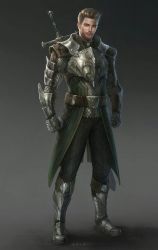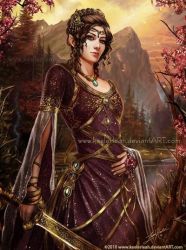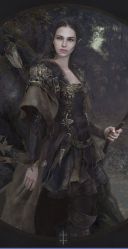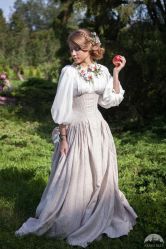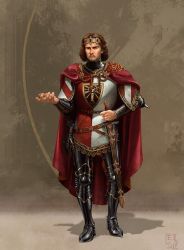Changes: Sim Layout, City-States, RPCSS Factions, and Storyline. Read More
Difference between revisions of "Telrae’dor"
From The Citadel
| (17 intermediate revisions by the same user not shown) | |||
| Line 1: | Line 1: | ||
[[image:Telraedor_02.jpg|350px|right]]''The French and English of Medieval history, the noble fairy folk of Irish Mythology, and the Gentry of Comraich.[[category:Character]][[category:TOC]] | [[image:Telraedor_02.jpg|350px|right]]''The French and English of Medieval history, the noble fairy folk of Irish Mythology, and the Gentry of Comraich.[[category:Character]][[category:TOC]] | ||
| + | |||
| + | '''This city-state is not represented on sim, nor does it have an RPCSS faction. Players may have characters who's home is from this city-state, but they will need to work for one of the other factions or play as a founding in RPCSS. [[Sim Status|Read More]] | ||
Telrae'dor lies in the central-western side of Essealas, south of Valgard, and north of Arjat. Like Halberg and most of Arcovia, Telrae'dor is a Tudor city. High buildings of plaster and wood are intersected with white walls and towers that form the basis of the high multi-turreted central castle. Telrae'dor is considered one of the pretties city-states as it is always clean and bedecked with florals and swags in every direction the eye settles. The people of Telrae'dor, the Dyrlings, are very proud of their city. | Telrae'dor lies in the central-western side of Essealas, south of Valgard, and north of Arjat. Like Halberg and most of Arcovia, Telrae'dor is a Tudor city. High buildings of plaster and wood are intersected with white walls and towers that form the basis of the high multi-turreted central castle. Telrae'dor is considered one of the pretties city-states as it is always clean and bedecked with florals and swags in every direction the eye settles. The people of Telrae'dor, the Dyrlings, are very proud of their city. | ||
| Line 10: | Line 12: | ||
Dyrling nobles (the Gentry) have a tendency towards narcissism at worst and self-absorption at best, with an underlying fissure of cruelty that can be activated by doing a Gentry wrong. In general, Dyrlings can be divided into two categories; Dark and Light. The Dubh (Dark) personality is charming, ambitious, and dominant. While the Ban (Light) personality is frivolous, vain, flighty, fiercely loyal, and protective. | Dyrling nobles (the Gentry) have a tendency towards narcissism at worst and self-absorption at best, with an underlying fissure of cruelty that can be activated by doing a Gentry wrong. In general, Dyrlings can be divided into two categories; Dark and Light. The Dubh (Dark) personality is charming, ambitious, and dominant. While the Ban (Light) personality is frivolous, vain, flighty, fiercely loyal, and protective. | ||
| − | Noble families, many centuries old, exist as the backbone of the | + | Noble families, many centuries old, exist as the backbone of the feudal region. In one way or another, every Dyrling belongs to or works for one of 300 noble families. The current royal house has been on the throne for the last four hundred years. |
Dyrlings will tell you that "<i>they get along with everyone</i>", while the people of Essealas have learned never to be in debt to a Dyrling, and expect them to hold to the letter of the law, not the spirit. To the average Dyrling nobleman or political agent “<i>The end always justifies the means</i>” and they are often confused as to why anyone would think otherwise. | Dyrlings will tell you that "<i>they get along with everyone</i>", while the people of Essealas have learned never to be in debt to a Dyrling, and expect them to hold to the letter of the law, not the spirit. To the average Dyrling nobleman or political agent “<i>The end always justifies the means</i>” and they are often confused as to why anyone would think otherwise. | ||
| − | |||
;Appearance | ;Appearance | ||
| − | + | Dyrlings stand between 5 and 7 feet in height. Willowy of build, with fine noble features that include incredible dexterity, their skin color ranges from Irish pale to natural beige. They often have two different colored eyes and unusual hair colors. Light hair may be very soft pastel shades, while dark hair may have purple, red, green, and blue highlights. | |
| − | |||
| − | |||
| − | |||
| − | |||
| − | |||
| − | |||
| − | |||
| − | |||
| − | |||
| − | |||
| − | |||
| − | |||
| − | |||
| − | |||
| − | |||
Gentry will wear just about anything that happens to be in fashion at the time. Women have been known to bring more than one dress to a feast, just in case. In general, they like long floating delicate fairy and elven like styles with stylized floral accents. Accessories will include such things as pearls, cut gemstones, woven gold, lace, beading, embroidery, brocades, velvets, silk, short-haired fur, etc. Things such as bustles, crinolines, petticoats, panniers, wigs, makeup, and bum rolls have gone in and out of fashion along with every Dyrling "upgrade" on Alfarian, Zephrin and Euresu styles. | Gentry will wear just about anything that happens to be in fashion at the time. Women have been known to bring more than one dress to a feast, just in case. In general, they like long floating delicate fairy and elven like styles with stylized floral accents. Accessories will include such things as pearls, cut gemstones, woven gold, lace, beading, embroidery, brocades, velvets, silk, short-haired fur, etc. Things such as bustles, crinolines, petticoats, panniers, wigs, makeup, and bum rolls have gone in and out of fashion along with every Dyrling "upgrade" on Alfarian, Zephrin and Euresu styles. | ||
| − | + | ;Traditions | |
| − | + | [[image:Priest.jpg|200px|right]]The Dyrling people worship a triple aspect god known as Athlendyr. His aspects are the Warrior, the Father, and the Shadow. The religion is administered by the sophisticated and worldly Maessere Priests. The religion of Athlendry is based on the concept of “deep magic” also known as the Law. To the Gentry, this deep magic is part of the belief that they have an ancient genetic heritage from the Tuatha De Danann. | |
| − | + | The religion of Dyrling, compared to that of the Fremfolk, is more liturgical. Large cathedrals and formalized services are preferred over local pagan style worship. Mæssere Priests are trained in politics, oration, art, literature, philosophy, and finances. The Mæssere priests also started and benefitted from the holy law that claimed it is not murder to kill an infidel, thus allowing fanatic religious knights the option to atone for killing. The sin of killing could be absolved by a specific amount of prayer and tithing. The Maessere Priests were more than happy to perform this expensive service on behalf of the Gentry. | |
| − | ; | + | ;[[Talk:Telrae’dor|Expanded Lore]] |
| − | + | :Further reading and links for the culture obsessed. | |
| − | + | ;[[History]] | |
| − | + | ;[[Timeline]] | |
| − | + | <hr> | |
| − | + | ===Small Council NPCs=== | |
| − | + | {| class="wikitable" style="width: 100%; | |
| − | + | !style="width: 200px;" | Role | |
| − | + | !Description | |
| + | |- | ||
| + | | Elias Estermont <br>''Ruler | ||
| + | |With 400 years backing his claim to the throne, no one is more proud than King Elias Estermont. He considers his kingdom beautiful and beckoning...just like himself. Elias was the oldest of his two other brothers, both of which also stand by his side in one way or another. He is a Ban who favors time in the spotlight, garnering both the love and adoration of his people. Though, he does not let the love of beauty and grace completely overshadow his capabilities as a ruler. He respects his council and their opinions, and is no stranger to the cruelties of the world, for he has had to delve out a couple of those cruelties himself. Blood of traitors belong to God, after all. | ||
| − | + | |- | |
| + | | Gavyn Manning <br>''Diplomat | ||
| + | |Lord Manning is one of the most renown Ban lords in Telrae’dor. It is said that what he lacks in years of age, he makes up for with a great amount of wisdom. His family is one of the oldest in the realm and has been close to the royal family for quite some time. And while he and the king are not exactly “close” friends (some would say a feud over a woman caused this), he is still held in extremely high regards and trusted by his majesty. And while he is no stranger to travelling for the crown, for some reason he seems adamant on staying by the king’s side whenever plans to travel northwards arise. | ||
| − | + | |- | |
| + | | Everett Cantrill <br>''Warlord | ||
| + | |Lord Everett Cantrill was hand selected by the king himself as warlord. Having served in King Elias’ personal guard for many years, he stepped up to the position when his predecessor fell ill and passed away. Lord Everett is best known for his lack of filter (no doubt the Dubh genetic has something to do with that) and battle-tested knowledge, both on and off the field. He is held in high regard by the king himself, some even going as far as saying that Elias looks at him much like a father figure. The people of Telrae’dor also adore him, as he makes a point of being a public face as much as possible. | ||
| − | + | |- | |
| + | | Zara Sutton <br>''Coinmaster | ||
| + | |Lady Zara Sutton is said to be one of the King’s most trusted council members. And while not much is really known about her past or where she came from, she is said to lend the King’s favor and ear (perhaps more than most would like to admit). And while she is regarded with poise and grace, many would see that a Dubh coinmistress should not be trusted. Though, her loyalties and mastery of money have been proven over and over again. The young Dubh is still unwed and when asked why that is, she simply smiles and says there is far too much work to be done to entertain the idea of a marriage. Some say she is obsessed with her job, while others would rumor that perhaps she has far more nefarious plans in mind. No one really knows. | ||
| − | + | |- | |
| + | | Marcus Grover <br>''Spy Master | ||
| + | |Marcus Grover is perhaps one of the few men on the King’s small council that did not start his life as a lord. He worked for his father, a humble merchant who traveled far and wide, growing his business from nearly nothing. With his excessive knowledge of what people liked and the rumors that ran (and sometimes spoiled their lives), Marcus learned a new way of trade. People often confided in him with their secrets. Such a trusting Ban face is hard to resist. Finding this to be useful, King Elias enlisted Marcus for his council. | ||
| − | + | |} | |
| − | |||
| − | |||
| − | |||
| − | |||
| − | |||
| − | |||
| − | |||
| − | |||
| − | |||
| − | |||
| − | |||
| − | |||
| − | |||
| − | |||
| − | |||
| − | |||
===Phrases=== | ===Phrases=== | ||
| + | ;Dyrling | ||
| + | :The name of all people living in the region of Telrae'dor | ||
| + | ;Gentry | ||
| + | :The 300 noble Dyrling families. They are further described as Dubh (dark) and Ban (light) based on their hair and eye colors, or in some cases just their personality. | ||
===Gallery=== | ===Gallery=== | ||
| + | [[image:TelraedorCity_04.jpg| x250px]] | ||
| + | [[image:TelraedorCity_03.jpg| x250px]] | ||
[[image:TelraedorCity_02.jpg|x250px]] | [[image:TelraedorCity_02.jpg|x250px]] | ||
| − | [[image: | + | [[image:Telraedor_24.jpg| x250px]] |
| − | [[image: | + | [[image:Telraedor_25.jpg| x250px]] |
| + | [[image:Telraedor_36.jpg| x250px]] | ||
| + | [[image:Telraedor_37.jpg| x250px]] | ||
| + | [[image:Telraedor_38.jpg| x250px]] | ||
[[image:Telraedor_03.jpg| x250px]] | [[image:Telraedor_03.jpg| x250px]] | ||
[[image:Telraedor_04.jpg| x250px]] | [[image:Telraedor_04.jpg| x250px]] | ||
| Line 91: | Line 81: | ||
[[image:Telraedor_27.jpg| x250px]] | [[image:Telraedor_27.jpg| x250px]] | ||
[[image:Telraedor_21.jpg|x250px]] | [[image:Telraedor_21.jpg|x250px]] | ||
| − | |||
Latest revision as of 18:28, 9 June 2021
The French and English of Medieval history, the noble fairy folk of Irish Mythology, and the Gentry of Comraich.
This city-state is not represented on sim, nor does it have an RPCSS faction. Players may have characters who's home is from this city-state, but they will need to work for one of the other factions or play as a founding in RPCSS. Read More
Telrae'dor lies in the central-western side of Essealas, south of Valgard, and north of Arjat. Like Halberg and most of Arcovia, Telrae'dor is a Tudor city. High buildings of plaster and wood are intersected with white walls and towers that form the basis of the high multi-turreted central castle. Telrae'dor is considered one of the pretties city-states as it is always clean and bedecked with florals and swags in every direction the eye settles. The people of Telrae'dor, the Dyrlings, are very proud of their city.
Telrae'dor's main food staple is its vast vegetable farms, vineyards, and orchards. They are not only skilled farmers but excel in the preservation of their foods that allows fresh, canned, and dried vegetables to be exported to all corners of the continent. They do not grow many cereal grains their rich soil is better suited to the more delicate greens.
- Personality
Dyrling personality is complex and diverse. Dyrling nobles, the Gentry, hold the theory that they are the ancestors of the Tuatha de Dannan, a powerful fae race. While this seems unlikely to the average Zephrin scholar the Dyrling Gentry do seem to be possessed of a deeply alien mindset. Luckily for the rest of Essealas, Dyrlings are probably human and at least outwardly, most Gentry are upbeat, outgoing, and curious, sometimes too curious.
Dyrling nobles (the Gentry) have a tendency towards narcissism at worst and self-absorption at best, with an underlying fissure of cruelty that can be activated by doing a Gentry wrong. In general, Dyrlings can be divided into two categories; Dark and Light. The Dubh (Dark) personality is charming, ambitious, and dominant. While the Ban (Light) personality is frivolous, vain, flighty, fiercely loyal, and protective.
Noble families, many centuries old, exist as the backbone of the feudal region. In one way or another, every Dyrling belongs to or works for one of 300 noble families. The current royal house has been on the throne for the last four hundred years.
Dyrlings will tell you that "they get along with everyone", while the people of Essealas have learned never to be in debt to a Dyrling, and expect them to hold to the letter of the law, not the spirit. To the average Dyrling nobleman or political agent “The end always justifies the means” and they are often confused as to why anyone would think otherwise.
- Appearance
Dyrlings stand between 5 and 7 feet in height. Willowy of build, with fine noble features that include incredible dexterity, their skin color ranges from Irish pale to natural beige. They often have two different colored eyes and unusual hair colors. Light hair may be very soft pastel shades, while dark hair may have purple, red, green, and blue highlights.
Gentry will wear just about anything that happens to be in fashion at the time. Women have been known to bring more than one dress to a feast, just in case. In general, they like long floating delicate fairy and elven like styles with stylized floral accents. Accessories will include such things as pearls, cut gemstones, woven gold, lace, beading, embroidery, brocades, velvets, silk, short-haired fur, etc. Things such as bustles, crinolines, petticoats, panniers, wigs, makeup, and bum rolls have gone in and out of fashion along with every Dyrling "upgrade" on Alfarian, Zephrin and Euresu styles.
- Traditions
The Dyrling people worship a triple aspect god known as Athlendyr. His aspects are the Warrior, the Father, and the Shadow. The religion is administered by the sophisticated and worldly Maessere Priests. The religion of Athlendry is based on the concept of “deep magic” also known as the Law. To the Gentry, this deep magic is part of the belief that they have an ancient genetic heritage from the Tuatha De Danann.
The religion of Dyrling, compared to that of the Fremfolk, is more liturgical. Large cathedrals and formalized services are preferred over local pagan style worship. Mæssere Priests are trained in politics, oration, art, literature, philosophy, and finances. The Mæssere priests also started and benefitted from the holy law that claimed it is not murder to kill an infidel, thus allowing fanatic religious knights the option to atone for killing. The sin of killing could be absolved by a specific amount of prayer and tithing. The Maessere Priests were more than happy to perform this expensive service on behalf of the Gentry.
- Expanded Lore
- Further reading and links for the culture obsessed.
- History
- Timeline
Small Council NPCs
| Role | Description |
|---|---|
| Elias Estermont Ruler |
With 400 years backing his claim to the throne, no one is more proud than King Elias Estermont. He considers his kingdom beautiful and beckoning...just like himself. Elias was the oldest of his two other brothers, both of which also stand by his side in one way or another. He is a Ban who favors time in the spotlight, garnering both the love and adoration of his people. Though, he does not let the love of beauty and grace completely overshadow his capabilities as a ruler. He respects his council and their opinions, and is no stranger to the cruelties of the world, for he has had to delve out a couple of those cruelties himself. Blood of traitors belong to God, after all. |
| Gavyn Manning Diplomat |
Lord Manning is one of the most renown Ban lords in Telrae’dor. It is said that what he lacks in years of age, he makes up for with a great amount of wisdom. His family is one of the oldest in the realm and has been close to the royal family for quite some time. And while he and the king are not exactly “close” friends (some would say a feud over a woman caused this), he is still held in extremely high regards and trusted by his majesty. And while he is no stranger to travelling for the crown, for some reason he seems adamant on staying by the king’s side whenever plans to travel northwards arise. |
| Everett Cantrill Warlord |
Lord Everett Cantrill was hand selected by the king himself as warlord. Having served in King Elias’ personal guard for many years, he stepped up to the position when his predecessor fell ill and passed away. Lord Everett is best known for his lack of filter (no doubt the Dubh genetic has something to do with that) and battle-tested knowledge, both on and off the field. He is held in high regard by the king himself, some even going as far as saying that Elias looks at him much like a father figure. The people of Telrae’dor also adore him, as he makes a point of being a public face as much as possible. |
| Zara Sutton Coinmaster |
Lady Zara Sutton is said to be one of the King’s most trusted council members. And while not much is really known about her past or where she came from, she is said to lend the King’s favor and ear (perhaps more than most would like to admit). And while she is regarded with poise and grace, many would see that a Dubh coinmistress should not be trusted. Though, her loyalties and mastery of money have been proven over and over again. The young Dubh is still unwed and when asked why that is, she simply smiles and says there is far too much work to be done to entertain the idea of a marriage. Some say she is obsessed with her job, while others would rumor that perhaps she has far more nefarious plans in mind. No one really knows. |
| Marcus Grover Spy Master |
Marcus Grover is perhaps one of the few men on the King’s small council that did not start his life as a lord. He worked for his father, a humble merchant who traveled far and wide, growing his business from nearly nothing. With his excessive knowledge of what people liked and the rumors that ran (and sometimes spoiled their lives), Marcus learned a new way of trade. People often confided in him with their secrets. Such a trusting Ban face is hard to resist. Finding this to be useful, King Elias enlisted Marcus for his council. |
Phrases
- Dyrling
- The name of all people living in the region of Telrae'dor
- Gentry
- The 300 noble Dyrling families. They are further described as Dubh (dark) and Ban (light) based on their hair and eye colors, or in some cases just their personality.


